Sanatan Articles
Satyaagrah
Written on
Satyaagrah
Written on
Satyaagrah
Written on
Satyaagrah
Written on
Satyaagrah
Written on
JOIN SATYAAGRAH SOCIAL MEDIA
When Secular Nehru Opposed Restoration Of Somnath Temple - The Somnath Temple treachery

History, it is said, is written by the victor. What is to be inferred, is that history is written by the loyalists of the victor. By court jesters and poets who write ballads in praise of the emperor. Unfortunately, our politicians and their voguish history is no better.
We are told ‘Chacha Nehru’ was a decent man. A just man. An honest man. An honourable man. A nationalist. A visionary. And perhaps he was. But the measure of politicians and leaders past, lies in his failure. Failures so carefully immersed in hollow flattery, that they have been lost in the pages of obscure books. What needs to be weighed is whether the leaders decency, justice, truth, honour and vision was what his country needed. Was what his country deserved, or even, what his country is told they got.
It is time perhaps, for the sake a divine future, to evaluate the past with integrity, sans the sycophantic lens donned by our intelligentsia.
Almost after a decade of active social media, awakened Hindus have now exposed many subterfuges of some post-partition rulers on ancient Bhartiya civilization legacies. The famous Munshi letter narrating the painful saga of obstructions faced in rebuilding the sacred Somnath Temple, and the heavy price paid by the first President of India Dr. Rajendra Prasad for being part of the installation of the deity (prana-pratishtha), are well known.
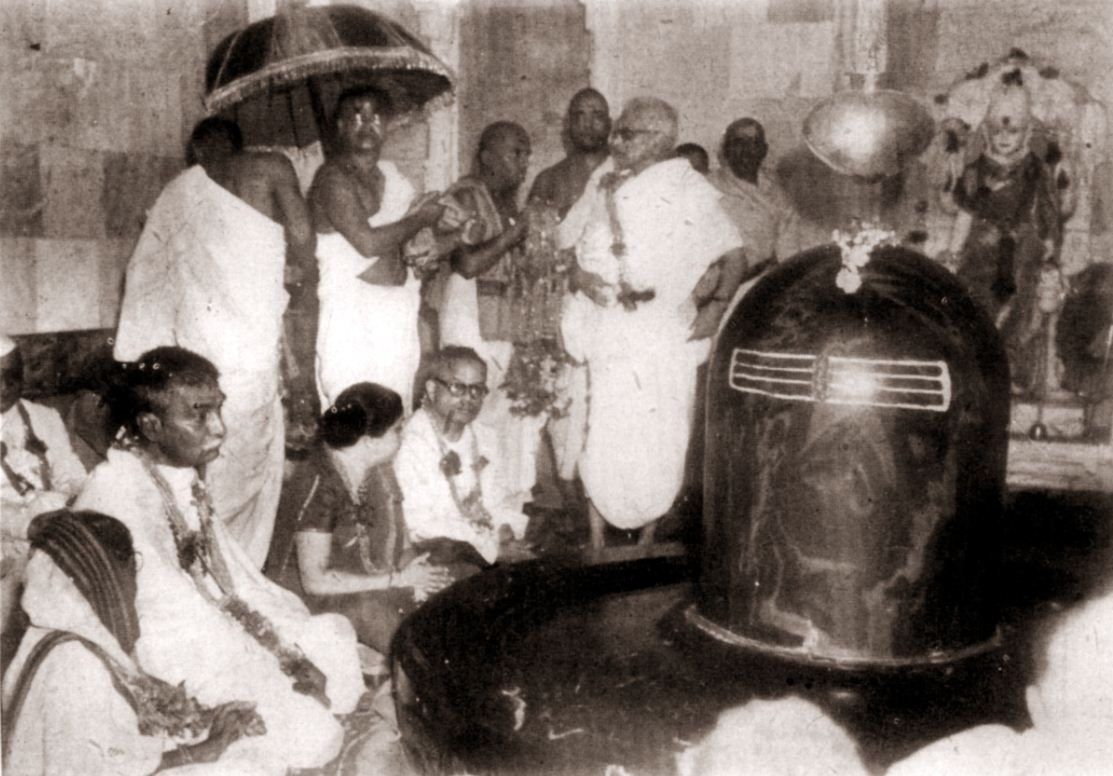 President Rajendra Prasad Somnath Temple Installation 1951 |
Emotional attachment and psychological feelings in the minds of every Indian regarding the destruction of Somanath temple and its standing ruins have been well explained in an article by then cabinet minister K.M. Munshi written in 1922. He writes:
“Desecrated, burnt and battered, it still stood firm – a monument to our humiliation, and ingratitude. I can scarcely describe the burning shame which I felt on that early morning as I walked on the broken floor of the once-hallowed sabhamandap littered with broken pillars and scattered stones. Lizards slipped in and out of their holes at the sound of my unfamiliar steps, and Oh! the shame of it! – an inspector’s horse, tied there, neighed at my approach with sacrilegious impertinence.”
The Nawab of Junagarh would just not allow the Hindus to re-built and renovate the crumbling temple which marked the holy spot where Yogeswar Lord Krishna left his mortal remains. However, after the Nawab of Junagarh had fled to Pakistan on 26th October 1947, the Indian army moved into Junagarh on 9th November 1947. How the accession happened, Nehru and Patel’s role in the process, is the subject of a different article.
After the accession of Junagarh to India in October 1947, Sardar Patel and N.V. Gadgil went to Prabhas Patan and visited the ruins of Somanath Temple. While walking along the ruins, N.V. Gadgil requested Sardar for the restoration of the Somanath temple that was attacked 17 times in its existence, most brutally by Islamic invaders. Patel immediately accepted his request, and in a public meeting on the same evening Sardar Patel announced:
“On this auspicious day of the New Year, we have decided that Somanath should be reconstructed. You people of Saurashtra should do your best. This is a holy task in which all should participate. That the Government of India has decided to rebuild the temple and install the shrine.”
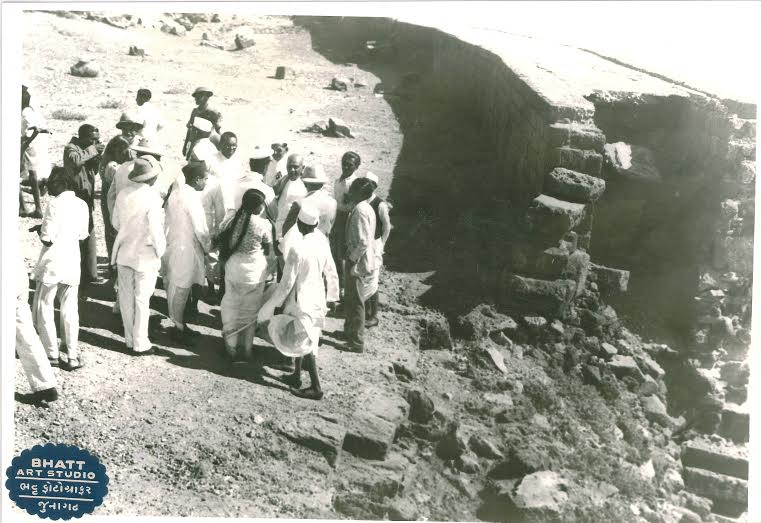 |
Junagarh administration and the Jam Saheb gave donation each on the spot. And 5000 acres of land around the temple was marked for the temple and various other projects like a Sanskrit University, Culture Centre, building of monument at the place of Dehotsarga and indeed, development of the town Prabhash which had fallen into neglect.
However, Maulana Abul Kalam Azad, the then Education Minister and great friend of Nehru, opposed the idea and in one of the Cabinet meetings argued that the ruins should be handed over to the Archaeological Survey of India (ASI) to be preserved in the same ruinous condition as a historical monument. The Minister, however, had not suggested similar measures to be taken for the Muslim shrines and mosques, repairing of which were being done by the ASI under his Ministry. But Sardar Patel was very firm and resolute regarding the rebuilding of the temple and responded with a note stating:
“The Hindu sentiment in regard to this temple is both strong and widespread. In the present conditions, it is unlikely that this sentiment will be satisfied by mere restoration of the temple or by prolonging its life. The restoration of idol would be a point of honour and sentiments with the Hindu public.”
The Government of India decided that the temple would be constructed by it, as it was being done in the case of Muslim shrines and mosques. Nehru indeed presided over the Cabinet meeting in which this decision was taken. The work began in the right earnest. The whole scheme was discussed with Gandhi ji also who approved of the entire scheme except that the funds necessary for the building of temple should come from public. Thereafter the idea that the Government of India should finance the reconstruction of the temple was given up.
But in January 1948, Gandhiji was assassinated. Sardar Patel passed away on 15 December, 1950. After the passing away of Sardar, Nehru started criticizing the whole project and became very hostile not just to the project but to those cabinet colleagues – mainly K.M. Munshi and V.N. Gadgil – who were associated with it right from the beginning. Both N.V. Gadgil’s and K.M. Munshi’s writings bring this out very clearly.
As preparations began for the prana-pratishtha according to the shashtras, the President of India, Dr. Rajendra Prasad, was requested to do the ceremony. In the midst of these preparations, once after a Cabinet meeting in early 1951, Nehru called Munshi and said: “I don’t like your trying to restore Somanath. It is Hindu revivalism.” Munshi not only felt very hurt but took the comments to imply that the things were done on his back and without his knowledge.
Nehru had revealed his cards. He was haunted by the spectre of ‘Hindu revivalism’. Restoring an ancient monument, a place of immense veneration, which had been repeatedly obliterated, was according to Nehru an act of Hindu revivalism.
However, Nehru never liked the idea of restoring this ancient monument, and “more than once criticised” Munshi for working for its reconstruction. Munshi was referred to in the Cabinet as someone “connected with Somnath”.
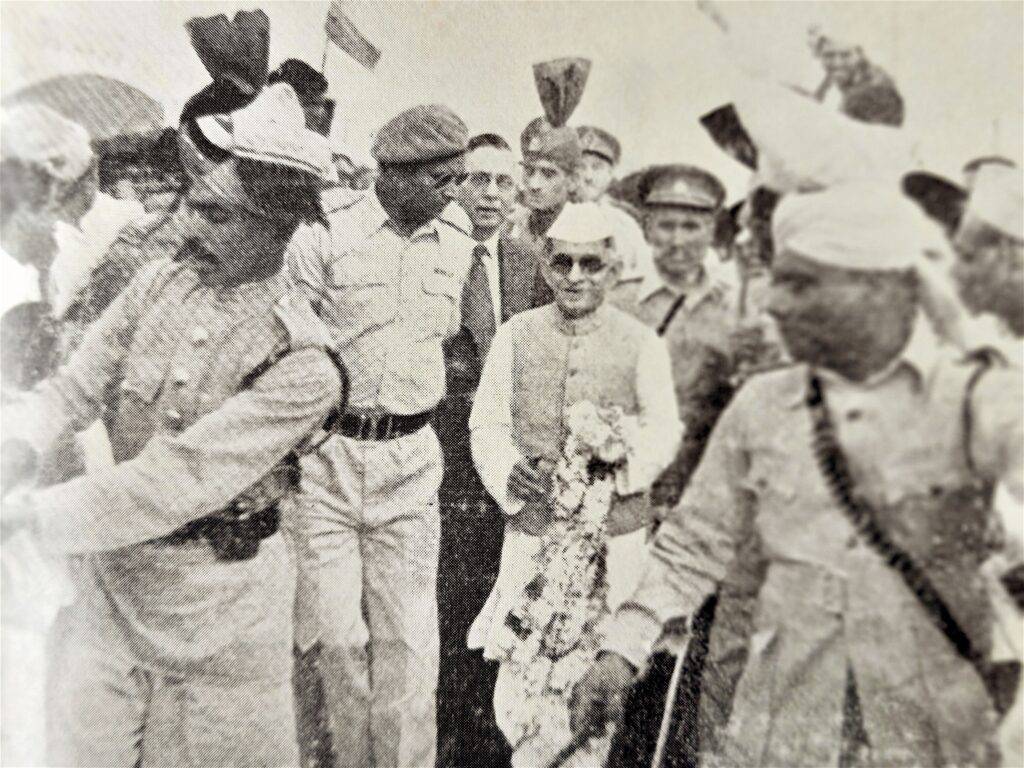 K M Munshi’s reception at Hakimpet Airport, Hyderabad. Source: End of an Era |
Munshi was incensed and did not utter a word in reply. He came back home and on 24 April, 1951, K.M. Munshi wrote a very long letter detailing the entire process regarding Somanath temple. But for this letter, many things regarding the rebuilding of Somanath temple would have remained completely unknown. Munshi writes (for the complete letter may please see Secular Politics Communal Agenda):
After the Indian Army was invited into Junagadh by the Dewan of the ex-Nawab, Sardar, Jam Saheb and Gadgil went to Junagadh. Next day, on 13 November, 1947, they went to Prabhas to see the ruins of the Somanath Temple. There they decided upon the reconstruction of the Somanath Temple. It was publicly announced by the Sardar ‘that the Government of India had decided to rebuild the temple and install the shrine.’ Jam Saheb and the Junagadh Administration both gave a donation each on the spot. Junagadh Administration agreed to develop the town of Prabhas and to place at the disposal of the Somanath Temple about 5,000 acres of land for its development. The States Ministry of the Government of India thereafter took steps to implement this decision.
On 13 December, 1947, the Standing Committee of the Public Work, Mines and Power (WMP) Ministry accepted Gadgil’s proposal that the Government of India should reconstruct the temple in the original form and develop roughly one square mile of the surrounding area. I understand that this decision was included in the Weekly Note to the Cabinet. As I learnt from Gadgil, it was also mentioned to the Cabinet. At the time, the decision of the Government was that the W.M.P. Ministry should reconstruct the old shrines and they were so doing in the case of certain Muslim shrines and mosques. The Government of India, thereafter, deputed Government architects to visit Prabhas and prepare a report for the reconstruction of the temple. When the whole scheme was discussed by Sardar with Bapu, he stated that it was alright except that the funds necessary for re-constructing the temple should come from the public. Gadgil also saw Bapu and Bapu gave him the same advice. Thereafter, the idea that the Government of India should finance the reconstruction of the temple was given up … .
On 25 December, 1947, the States Ministry requested the Junagadh authorities to lease out a sufficiently large area surrounding the temple for development on the lines decided upon. The Junagadh authorities thereafter took steps to earmark the area that was to be given for the temple. The matters were discussed at considerable length between the administration of Junagadh and myself who was asked by Sardar to look into the matter. Ultimately, Sardar approved of the area that was to be given to the temple … .
On 23 January, 1949, a Conference was held at Jamnagar attended by Sardar, Jam Saheb, Gadgil, Dhebar, the Chief Minister of Saurashtra, Samaldas Gandhi, Administrator of Junagadh, and the Regional Commissioner. Then the States Ministry had decided to transfer the temple properties to a Somanath Trust to be created for the purpose. At that conference the scheme was finalised. It was decided that the Trust should be executed by the Saurashtra Government; and that the Government of India and the Saurashtra Government should each have two representatives on the Board of Trustees. I was, thereafter, asked by the States Ministry to prepare a Trust Deed for the purpose, which I did … . Several Government servants, including Dr. J.C. Ghosh, Chemist, and the Town-Planning Expert of the Government of India were members of the Committee. The Director-General of Archaeology was appointed the Convener, and in view of my fairly intimate knowledge of ancient history of Gujarat, and particularly of Somanath, I was appointed the Chairman of the Committee. As a Chairman, I took up the implementation of the scheme in closest co-operation with the States Ministry… .
On 18 October 1949, Sardar approved of this Trust. Government of India appointed Gadgil and Rege, Regional Commissioner of Saurashtra, as their representatives on the Board of Trustees; it also nominated Shri B.M. Birla and myself as public men; Saurashtra Government nominated Jam Saheb and Samaldas Gandhi as their nominees. In inviting Gadgil to be a Trustee it was specifically mentioned that in view of the fact that he was the head of the Ministry of WMP, it was appropriate that he should be one of the Trustees.
On 22 November, 1949, the States Ministry wrote to Jam Saheb as follows:
‘Somanath is an ancient heritage of ours, and we have to take every care to see that the temple and its environments are maintained in a manner worthy of their ancient traditions. For this purpose we propose to constitute a Trust. Your Highness will remember that Sardar made an appeal for funds for the Somanath Trust sometime ago....’
The objects of the Trust Deed make it clear that the temple is not only to be open to all classes of Hindu community, but, according to the tradition of the old temple of Somanath, also to non-Hindu visitors; that the area should be developed as a model town; that educational institutions including a university and agricultural farm should be established. The intention to throw open the temple to Harijans has evoked some criticism from the orthodox section of the community… .
Sardar himself was to have not only attended the inaugural ceremony, but actually to perform the ceremony. Unfortunately, the temple could not be completed, and he died in the meantime. Apart from any other sentiment, we all feel that we should help in the redemption of Sardar’s pledge to the best or our ability…. As you will see, the Government of India not only took the initial decision to reconstruct the temple, but formulated and set going the scheme, and created the agency for its further implementation. This will clearly indicate to you the extent of the Government of India’s association with the scheme… .
Yesterday you referred to ‘Hindu revivalism.’ I know your views on the subject; I have always done justice to them; I hope you will equally do justice to mine. Many have been the customs which I have defied in personal life from my boyhood. I have laboured in my humble way through literary and social work to shape or reintegrate some aspects of Hinduism, in the conviction that that alone will make India an advanced and vigorous nation under modern conditions… .
One word more. It is my faith in our past which has given me the strength to work in the present and to look forward to our future. I cannot value freedom if it deprives us of the Bhagavad Gita or uproots our millions from the faith with which they look upon our temples and thereby destroys the texture of our lives. I have been given the privilege of seeing my incessant dream of Somanath reconstruction come true. That makes me feel—makes me almost sure—that this shrine once restored to a place of importance in our life will give to our people a purer conception of religion and a more vivid consciousness of our strength, so vital in these days of freedom and its trials.”
N.V. Gadgil, the then Minister of Urban Development and Rehabilitation (MUDR), has also mentioned this about-turn of Nehru after Sardar’s death. Gadgil writes:
“Another important work I remember is the restoration of Somanath Temple… I prepared a plan and recorded it in the proceedings of the Cabinet. The Maulana said that the site should be preserved as it was. I said that the intention was to restore it to its original state and thus to destroy a silver of distrust between the Hindus and the Muslim…. Earlier it had been decided to undertake the work through the Central Government. [But] On Gandhiji’s advice, it was decided to entrust the work to a Trust which would have one representative of the Central Government.
The Government of India appointed a committee of two engineers and one architect for the supervision of the work. By 1951, the whole of the base of the temple was ready as also the inner altar. We requested President Rajendra Prasad to be the chief participant in the installation of the Lingam…
As is usual with Munshi, he gave the enterprise a grandiloquent turn and wrote to our Ambassador in Peking, Panikkar, to send the waters of Chinese rivers for the ceremony.7 Panikkar, that secular Ambassador, asked the Ministry of External Affairs to what particular head of account the expenses on that could be debited and the letter was placed before Nehru… Nehru expressed the opinion that the President should not attend the ceremony. The Cabinet also discussed the matter… I quoted from the Cabinet reports to prove that Nehru’s charge that the thing was done without informing the Cabinet was not correct. The Maulana and Jagjivan Ram said that the matter was discussed. Government of India had spent about hundred thousand rupees on the work. I pointed out that the Government gave subsidies and grants to thousands of mosques and tombs and there could be nothing objectionable if it spent a little money in restoring a Hindu temple. I understood secularism to mean the equality of all religions… Millions of Hindus are idol-worshippers and not intellectuals like Nehru. Some of us are subject to the weakness of a firm faith…”
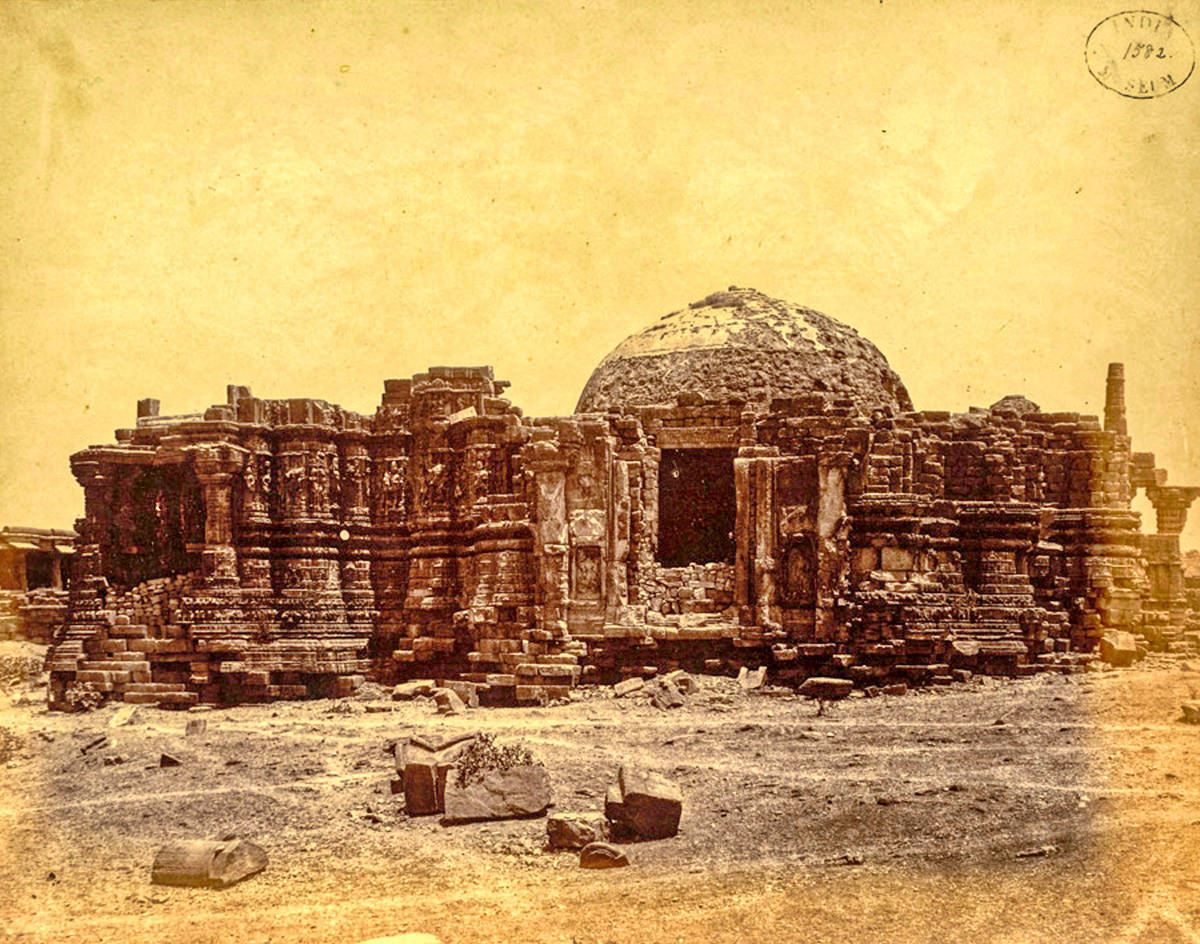 File:1869 archive photo of the Somanatha temple, Veraval Gujarat, Exterior 03.jpg |
The above two quotations speak for themselves and bring out rebuilding of the Somanath temple was not such a smooth task, after all. Even after the completion of temple building uncertainties remained regarding the installation of deity (pran-pratishtha). The then President of India, Dr. Rajendra Prasad, was requested to preside over the ceremony. Nehru strongly advised the President to desist from going to Somanath for the installation ceremony of Shiva Linga in the temple. However, the President not only ignored Jawaharlal Nehru’s advise, and did go to Somanath for the ceremony. On that occasion he delivered a speech in Hindi which is a master peace of philosophy, culture, history and literature capturing essence of India’s soul.
On reading this letter, V.P. Menon, the legendary civil servant who assisted Sardar Patel in the gigantic task of the integration of the princely states, wrote a missive to Munshi. “I have seen your masterpiece. I for one would be prepared to live and, if necessary, die by the views you have expressed in your letter.”
Upon the restoration of the Somnath Temple in 1951, at the time to ceremonially install the Jyotirlingam, KM Munshi invited Dr. Rajendra Prasad to inaugurate the temple and install the Jyotirlingam ceremonially. That Jawaharlal Nehru was vehemently against Dr. Prasad attending the ceremony has been detailed by many.
Former Indian bureaucrat, Madhav Godbole writes in his book, “The God who failed : An assessment of Jawaharlal Nehru’s leadership :
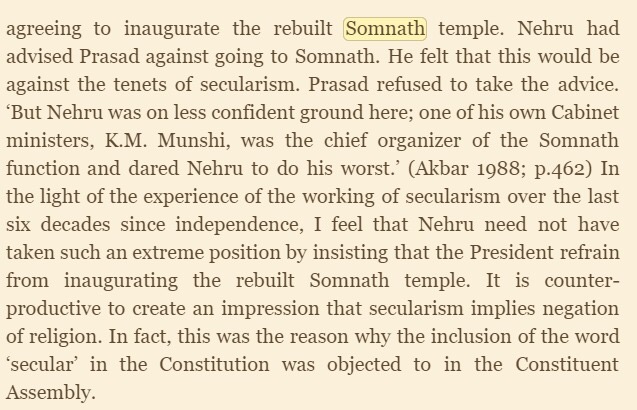 |
The reference cited by Mr. Godbole is that of MJ Akbar’s “Nehru the making of India”, page 462.
In another book by Rajnikant Puranik, there is a detail of the letter Nehru wrote to Dr. Prasad detailing why he was opposed to him attending the inauguration of the Somnath Temple.
Nehru wrote:
“I confess that I do not like the idea of your associating yourself with a spectacular opening of the Somnath Temple. This is not merely visiting a temple, which can certainly be done by you or anyone else but rather participating in a significant function which unfortunately has a number of implications..”
It seems by “number of implications” he meant that Rajendra Prasad inaugurating a temple would be a challenge to the secular fabric of the Indian Republic. Rajendra Prasad ignored Nehru’s advice and added, “I would do the same with a mosque or a church if I were invited.”
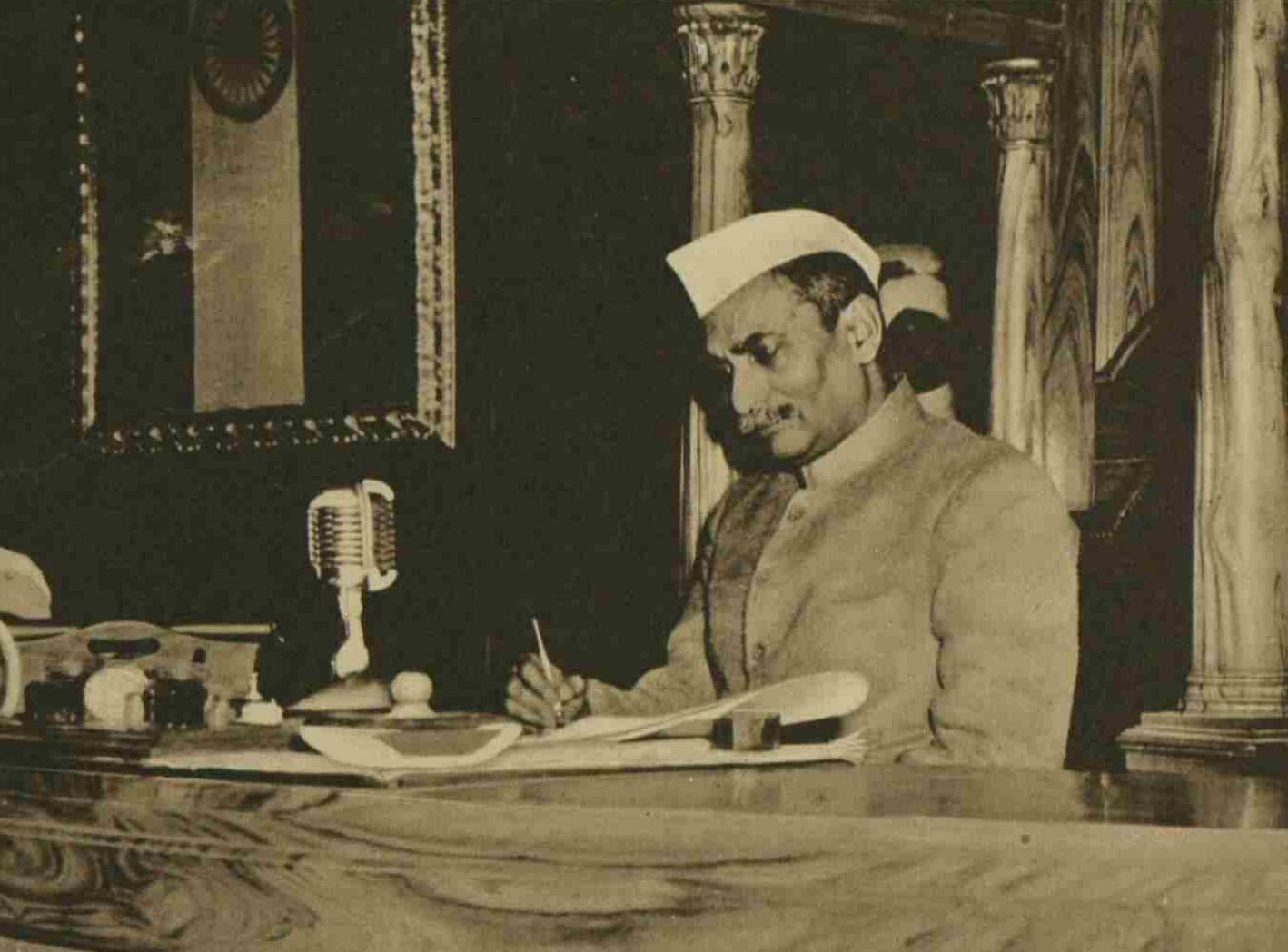 Rajendra Prasad President of India |
So, on 11 May 1951, Rajendra Prasad, while presiding over the opening ceremony of the temple, gave a stirring speech. He said that the physical symbols of our civilisation maybe destroyed, but no arms, army or king could destroy the bond that the people had with their culture and faith. Till that bond remained, the civilisation would survive. He added that it was the creative urge for civilisational renewal, nurtured in the hearts of the people through centuries that had once again led to the praan-pratishta of the Somnath deity. Somnath was the symbol of economic and spiritual prosperity of ancient India, he said. The re-building of Somnath will not be complete till India attains the prosperity of the yesteryear.
This grand speech at the ceremony was covered widely in the press but was blanked out by official channels on Nehru’s insistence. Such was Nehru’s inexplicable hatred.
It was inexplicable hatred, because ‘secularism’ didn’t explain his behaviour. Secularism would typically mean separation of religion and state. Or as Dr. Prasad had put it then, the state not being religious or irreligious. While Nehru was opposed to the reconstruction of the Somnath Temple to preserve the ‘secular fabric’ of the country, it was him, Pandit Jawaharlal Nehru, who continued the Port Hajj Committee Act of 1932, enacted by the British and expanded it to the Hajj Committee Act of 1959. It is also inexplicable that while Nehru was against the restoration of the Somnath Temple which was being done from public money, he had no qualms when the Government paid for the subsequent restoration of Sanchi and Sarnath, the Buddhist places of worship.
This baffling dichotomy can’t be seen in isolation. In Jawaharlal Nehru’s book, “Glimpses of World History”, written by him in 1934, there is an interesting passage that not only gives us a coup into his skewed thinking, but also his blatant disregard for history.
In Chapter 51 of his book, titled “From Harsha to Mahmud in North India”, Nehru writes:
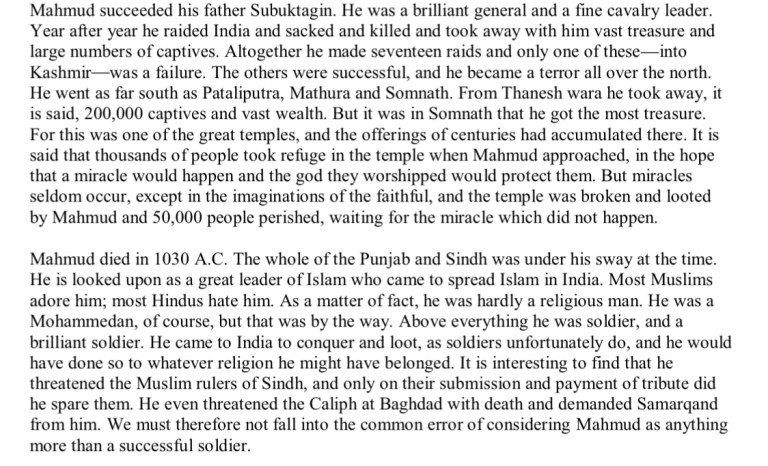 |
Jawaharlal Nehru gives himself away. This blatant misrepresentation of history to glorify a brutal invader such as Mahmud Ghazni can be either written off to unscholarly pursuits, or his deep need to glorify the Muslims invaders so as to cater to a specific section of the Indian society.
To showcase his blatant distortion, I attach herewith pages from ‘Lives of Indian Images’ by Richard Davis, 1999 (Princeton University Press).
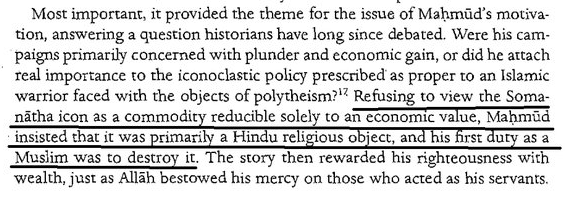 |
To start with, Ghazni refused to view the idol of Somnath as an economic commodity. He insisted that it was primarily a Hindu religious object and his first duty was to destroy it.
A couple of other snippets taken from the same book, pages 105-106, reveals the misrepresentations in Nehru’s book.
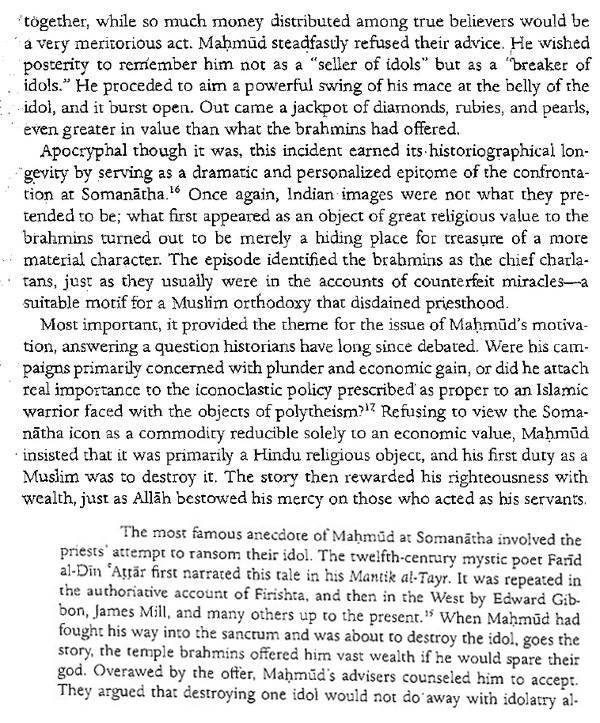 |
The historian refers to how the Brahmins offered Ghazni vast wealth if he spared the idol, but Ghazni refused. Ghazni even broke the Somnath idol and took its pieces to be trod over the footsteps of Jama Masjid in Ghazna, Afghanistan. In such an event, it is unfathomable for Nehru to call Ghazni non religious and a brave soldier, no less. While the other historical facts mentioned by Nehru are also dubious, they make a discussion for another day.
His treachery as far as the Somnath temple is concerned and the psychology behind it can be understood from what he said in a completely different context. When the Hindu Code Bill was being discussed, Dr. Rajendra Prasad thought it was discriminatory to alter personal laws of Hindus and not Muslims. Dr. Prasad was in favour of the idea of ‘Indian Code’ that applied to all Indians.
While sponsoring the Hindu Code Bill, Nehru said:
“The Bill, which has given rise to so much argument which became the symbol of the conflicts between progress and reaction in social domain…the spirit of the Bill…was a spirit of liberation and freeing our people, more especially our women folk from the outworn customs and shackles which have bound them..”
However, in the same matter, Nehru also said :
“We have passed one of two laws recently and we are considering one… in regard to Hindu marriage and divorce..these are personal faith ingrained in custom, habit and religion..now we do not dare to touch the Muslims because they are a minority and we do not want the Hindu majority to do it. These are personal laws and so will remain for the Muslims until they want to change them…we do not wish to create the impression that we are forcing any particular thing in regard to Muslims”
(-Nehru, A Troubled Legacy, Page 52)
Thus, with the devotion of millions, the pledge of Patel and an untiring effort by Munshi, the majestic Somnath temple was restored and a soothing balm was applied to the unhealed wounds of the nation. Meanwhile, Nehru did change his mind regarding ancient shrines. He donated land for the construction of pilgrim’s centre in Sanchi for Buddhist travellers and provided grants for the restoration of Sarnath (another Buddhist site).
“Many years later, reflecting on the Somnath incident, Munshi, penned the most devastating critique of Nehruvian secularism. He stated: “In its (secularism) name, anti-religious forces, sponsored by secular humanism or Communism, condemns religious piety, particularly in the majority community.”
In its name, minorities are immune from such attention and have succeeded in getting their demands, however unreasonable, accepted.
K M Munshi
Munshi said:
“In its name, again, politicians in power adopt a strange attitude which, while it condones the susceptibilities, religious and social, of the minority communities, is too ready to brand similar susceptibilities in the majority community as communalistic and reactionary. How secularism sometimes becomes allergic to Hinduism will be apparent from certain episodes relating to the reconstruction of Somnath temple.
“These unfortunate postures have been creating a sense of frustration in the majority community.
“If however the misuse of this word ‘secularism’ continues…if every time there is an inter-communal conflict, the majority is blamed regardless of the merits of the questions; if our holy places of pilgrimage like Banaras, Mathura and Rishikesh continue to be converted into industrial slums…, the springs of traditional tolerance will dry up.”
Written in the Sixties an erstwhile member of Nehru’s Cabinet, truer words were perhaps never spoken.
The story of Nehru’s “secularism” doesn’t end here. Nehru, who created so much hue and cry on Somnath temple, going to the extent of blacking out President’s speech, started the tradition of hosting IFTAAR party every year in the PMO – an ugly tradition of government appeasement of a particular community that continued unabated till 2014.
It is evident that Nehru was far from being a secularist. He treated the minority with kid gloves while the onus of secularism was enforced on the majority with impunity. Whether in his narration of history or in the laws he enacted, or even the right to worship. The legacy of appeasing the minority at the expense of the majority was indeed a creation of Jawaharlal Nehru.
It is indeed a tragedy of our modern times, that a leader who sought to oppress the majority in a bid to appease the minority is tom-tomed as the beacon of secularism. Of honour. Of justice and of morality. The Somnath Temple was and always will be a symbol of Hindu resilience. A symbol that the Hindu faith weathers through. That it will survive inspite of invaders and ‘secularists’.
References:
Opindia.com - Nupur J Sharma | 14 November, 2017 - Nehru’s legacy – The Somnath Temple treachery
Swarajyamag.com - By Manish Maheswari-May 12, 2017
Nationalheraldindia.com - NHS Bureau - Updated: 06 Aug 2020
Internet articles (through VIF), Dr Makkhan Lal, January 16 , 2018 - Re-building of Somanath Temple: A Tribute to Sardar Patel and K.M. Munshi
vsktelangana.org - How Somnath Mandir Reconstructed by vskteam - December 2, 2018
kreately.in - Nehru: Hated Somnath Temple, Hosted Iftar Parties by Kshitij Mohan - July 22, 2020
K.M. Munshi, 1922, in East and West. As quoted in ‘Somanath: Fulfilment of a Collegian’s Dream’, Bhawan’s Journal, Jan.1, 1967.
K.M. Munshi, 1967, Pilgrimage to Freedom, Appendix 105, p. 560.
Ibid
K.M. Munshi, 1951, Pilgrimage to Freedom, pp. 560-64.
K.M. Munshi’s letter to Jawaharlal Nehru dated 24 April, 1951. In K.M. Munshi, above.
Also reproduced in Makkhan Lal, 2008, Secular Politics Communal Agenda, pp. 150-154.
K.M. Munshi had written to all the Ambassadors for the water and soils from the country in which they were posted. This was to be used, as per the provisions of shashtras at the time of Pran-Pratistha and the inauguration ceremony of the temple.
N.V. Gadgil, 1968, Government From Inside, Meerut, pp. 185-186
 Support Us
Support Us
Satyagraha was born from the heart of our land, with an undying aim to unveil the true essence of Bharat. It seeks to illuminate the hidden tales of our valiant freedom fighters and the rich chronicles that haven't yet sung their complete melody in the mainstream.
While platforms like NDTV and 'The Wire' effortlessly garner funds under the banner of safeguarding democracy, we at Satyagraha walk a different path. Our strength and resonance come from you. In this journey to weave a stronger Bharat, every little contribution amplifies our voice. Let's come together, contribute as you can, and champion the true spirit of our nation.
 |  |  |
| ICICI Bank of Satyaagrah | Razorpay Bank of Satyaagrah | PayPal Bank of Satyaagrah - For International Payments |
If all above doesn't work, then try the LINK below:
Please share the article on other platforms
DISCLAIMER: The author is solely responsible for the views expressed in this article. The author carries the responsibility for citing and/or licensing of images utilized within the text. The website also frequently uses non-commercial images for representational purposes only in line with the article. We are not responsible for the authenticity of such images. If some images have a copyright issue, we request the person/entity to contact us at This email address is being protected from spambots. You need JavaScript enabled to view it. and we will take the necessary actions to resolve the issue.
Related Articles
- Godse's speech and analysis of fanaticism of Gandhi: Hindus should never be angry against Muslims
- Vinayak Damodar Savarkar – A Misunderstood Legacy
- Narasimha Rao govt brought places of Worship Act as a hurdle in reclaiming ancient Hindu heritage destroyed by Muslim invaders
- Nehru's Himalayan Blunders which costed India dearly - Integration of Princely States
- A Great man Beyond Criticism - Martyrdom of Shaheed Bhagat Singh (Some Hidden Facts)
- Petition seeking restoration of 27 Hindu, Jain temples inside Quwwat Ul-Islam mosque at Qutub Minar complex rejected by Delhi court
- Madras High Court: Do not take decision on melting Temple gold till Trustees are appointed
- If not for Muslim appeasement, Vande Mataram would have been India's National Anthem: the history of Muslim opposition and support
- Ghost from the past: Unseen picture of Nehru voting in favour of partition of India goes viral
- Father of the Nation! Absolutely not. Mohandas Karamchand Gandhi was not the father of the nation either officially or otherwise
- Why Hindus not claiming their temples back from the Government control: Is pro-Hindu govt will always be in power
- On 16th Aug 1946, during Ramzan's 18th day, Direct Action Day aimed to provoke Muslims by mirroring Prophet Muhammad's victory at Badr, Gopal 'Patha', the Lion of Bengal, heroically saved Bengali Hindus & Calcutta from a planned genocide, altering history
- Calcutta Quran Petition: A petition to ban the Quran altogether was filed 36 years ago, even before Waseem Rizvi petitioned for removing 26 verses from Quran
- The Lost City of Dwarka and step-motherly treatment to it's Archaeological excavations as revealed by RTI: Shocking state of neglect for Hindu sites by the Government
- 5 lakh kg of temple jewellery has been melted so far, DMK government planning to melt even more





















